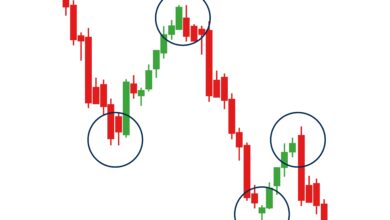Forex Basics Forex trading involves the buying and selling of currencies with the aim of making a profit. To make informed trading decisions, traders rely on various analytical approaches, with two primary methods being fundamental analysis and technical analysis. Understanding the basics of these two approaches is crucial for anyone interested in currency trading.
1. Fundamental Analysis:
in Forex Basics, Fundamental analysis focuses on evaluating the intrinsic value of a currency by studying economic, political, and social factors that influence its value. Traders who use fundamental analysis examine a wide range of information, including macroeconomic indicators, central bank policies, geopolitical events, and market sentiment. Here are some key aspects of fundamental analysis:
a. Macroeconomic Indicators: Traders analyze economic data such as GDP growth rates, inflation, employment figures, interest rates, and trade balances. These indicators provide insights into the overall health and performance of an economy, which can impact a currency’s value.
b. Central Bank Policies: Central banks play a crucial role in shaping a country’s monetary policy. Traders closely monitor central bank decisions regarding interest rates, monetary stimulus programs, and statements from central bank officials, as these factors can influence currency values.
c. Geopolitical Events: Political stability, conflicts, elections, and policy changes can have a significant impact on currency values. Traders consider geopolitical developments and assess their potential impact on currency markets.
Fundamental analysis aims to identify discrepancies between a currency’s current value and its intrinsic value, helping traders determine whether a currency is overvalued or undervalued. This analysis is often used for long-term trading strategies.
2. Technical Analysis:
in Forex Basics, Technical analysis involves studying historical price data, charts, and various indicators to identify patterns, trends, and potential trading opportunities. Traders using technical analysis focus on market behavior and price movements rather than underlying fundamental factors. Here are some key aspects of technical analysis:
a. Price Charts: Traders use various types of charts, such as line charts, bar charts, and candlestick charts, to visualize price movements over different timeframes.
b. Technical Indicators: Technical indicators, such as moving averages, oscillators (e.g., RSI, MACD), and trend lines, are mathematical calculations applied to price data. They help identify patterns, trends, and potential entry and exit points.
c. Support and Resistance Levels: Support levels are price levels where buying pressure is expected to outweigh selling pressure, causing prices to bounce back. Resistance levels, on the other hand, are price levels where selling pressure is expected to outweigh buying pressure, causing prices to reverse. Traders use these levels to make trading decisions.
Technical analysis is popular among short-term traders and day traders who aim to capitalize on short-lived price movements. It provides insights into market sentiment, supply and demand dynamics, and potential price reversals.
It’s important to note that fundamental and technical analysis are not mutually exclusive. Many traders combine both approaches to gain a comprehensive understanding of the market. By considering both the underlying fundamentals and technical patterns, traders can make more informed trading decisions.
Ultimately, the choice between fundamental analysis and technical analysis depends on an individual trader’s preferences, trading style, and time horizon. Some traders may rely heavily on one approach while using the other as a supplementary tool. Developing a solid understanding of both fundamental and technical analysis is beneficial for traders seeking long-term success in the dynamic world of currency trading.






